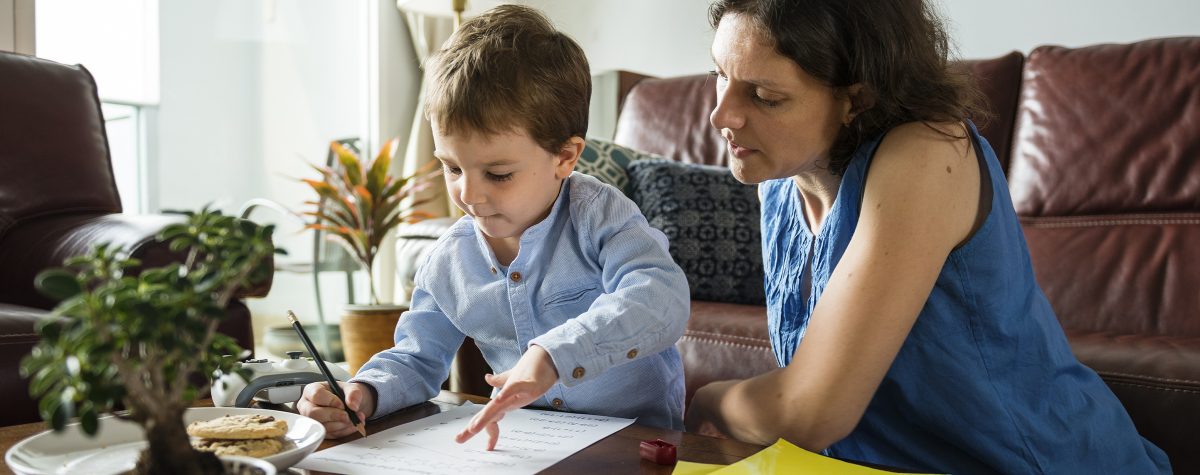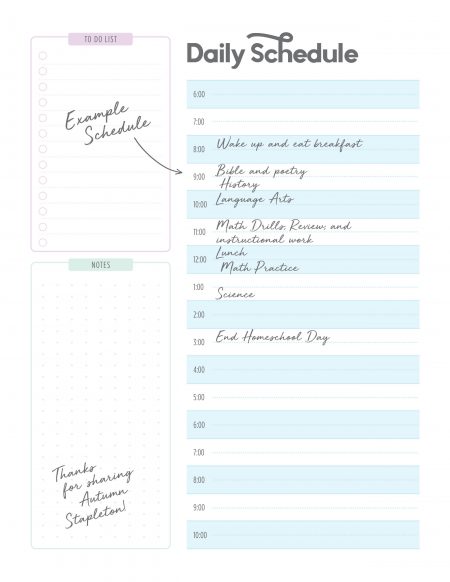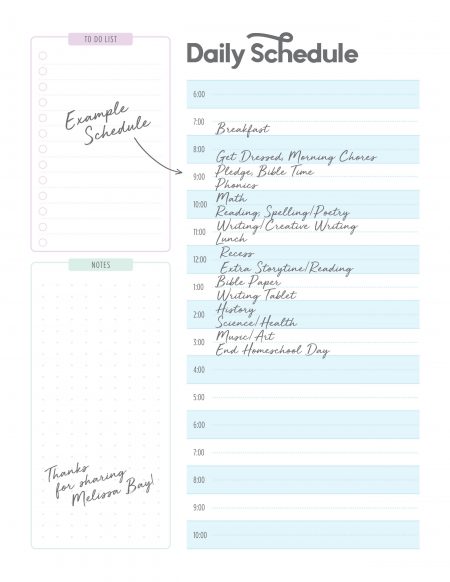If it’s your first year of homeschooling, everything can feel overwhelming. Nobody said homeschooling would be easy, but if you stick with it, we promise, it’s worth it! Every homeschool family started out exactly where you are, so we wanted to share some tips and advice to get you through your first year of homeschool.
Stay Organized
Staying organized is one of the best ways to reduce stress and stay focused. Start by keeping a daily planner of everything you want to teach and accomplish that day. Lay out your child’s work for the week on the Sunday before. Separate by each subject and use a different colored folder for each. At the end of the week, keep the papers together using a paper clip so you can keep track of everything your child has done. We also offer parent materials like lesson plans and teaching aids to help you stay focused on how to teach instead of what or when.
Test Out Different Schedules
The best part about homeschooling is that you can create a schedule that works best for your child. Starting at 8 a.m. might work great for children, but it’s not ideal for everyone. If starting early in the morning causes frustration with your sleepy child, try starting an hour or two later. If your child gets burnt out during the middle of the day, take a 30-minute break. There’s no right or wrong schedule when it comes to homeschooling. Do what works best for your family. We recently asked some of our Abeka homeschool moms how their day looks on Facebook, and here’s a couple of daily examples:
We don’t use a schedule, which is the joy of homeschooling! Every day is a little different. We start school around 8:30, with lunch at noon. During that time, the kids pick whichever subject they want to work on. While I’m working with one, the other is doing their homework from their subject. My kids are older (middle and high school), so much of it can be done on their own. Only a few subjects need to be done together. This way, a student is always working on something, and we’re usually able to finish by lunch (or earlier). – Lisa L.
We normally go along with the video guidebook. We normally do Bible first, then arithmetic, writing, and phonics. Have a lunch break and then finish up with spelling/poetry, combination practice, and an activity. Then we do reading later in the afternoon or after dinner. Reading is a way of relaxing. – Mandy S.
I use the sample schedule at the front of the lesson plan book as a guide for my 5th and 1st grader that helped a lot. – Kelly S.
Not sure where to start? Download a schedule template here , and check out some examples of how to fill out your schedule. Remember—it may take some trial and error to get it just right!
Don’t Try to Control Everything
It’s easy to become frustrated when your day doesn’t go as planned. Each day holds new challenges that are not always under your control. Don’t worry if the lesson didn’t go as well as planned or the project didn’t turn out quite right. Nothing is perfect with homeschooling, but that’s what makes it so unique and, best of all, flexible.
Use Abeka’s Resources
Abeka provides resources to make your homeschool journey easier. With options like Abeka Academy, you have video lessons at your fingertips that can teach your child in every subject or just the subjects that you aren’t that confident in. The Abeka Academy Academic Helpline, 1-800-874-3592, features education specialists that can explain a concept further for your child or help them solve a problem. We also offer digital teaching aids, textbooks, and free downloadable clip art to add some color to your lessons.
Join a Homeschool Group
Homeschool groups and co-ops can be a great way to meet and connect with other homeschool families in your area, not to mention support each other. Other homeschool moms can provide teaching resources, along with tips and advice. These groups also give your children opportunities to socialize with other homeschool kids. Homeschool looks different in every family, and while there are many different styles to choose from, making friends and having support can make all the difference in the world.
Keep It Fun
Let’s face it; school can get dull, even if it’s not happening in a stuffy classroom. Always be on the lookout for creative ways to make learning fun. Younger children might enjoy songs that help them learn a poem or Bible verse. Your older children might enjoy dressing up for a career day of what they want to be while you teach them facts about the career and the industry. You can follow Abeka on Facebook, Instagram, and Pinterest for creative ideas on how to make homeschool fun.
The first year of homeschool is bound to be intimidating, but the good news is, you can handle it! With a little organization, focus, and the humility to ask for help when you need it, you and your kids will be able to enjoy all the benefits of homeschool without first-year stress in no time.






Comments for 6 Tips For How to Handle Your First Year of Homeschool
Add A Comment
Your email address will not be published. Required fields are marked *